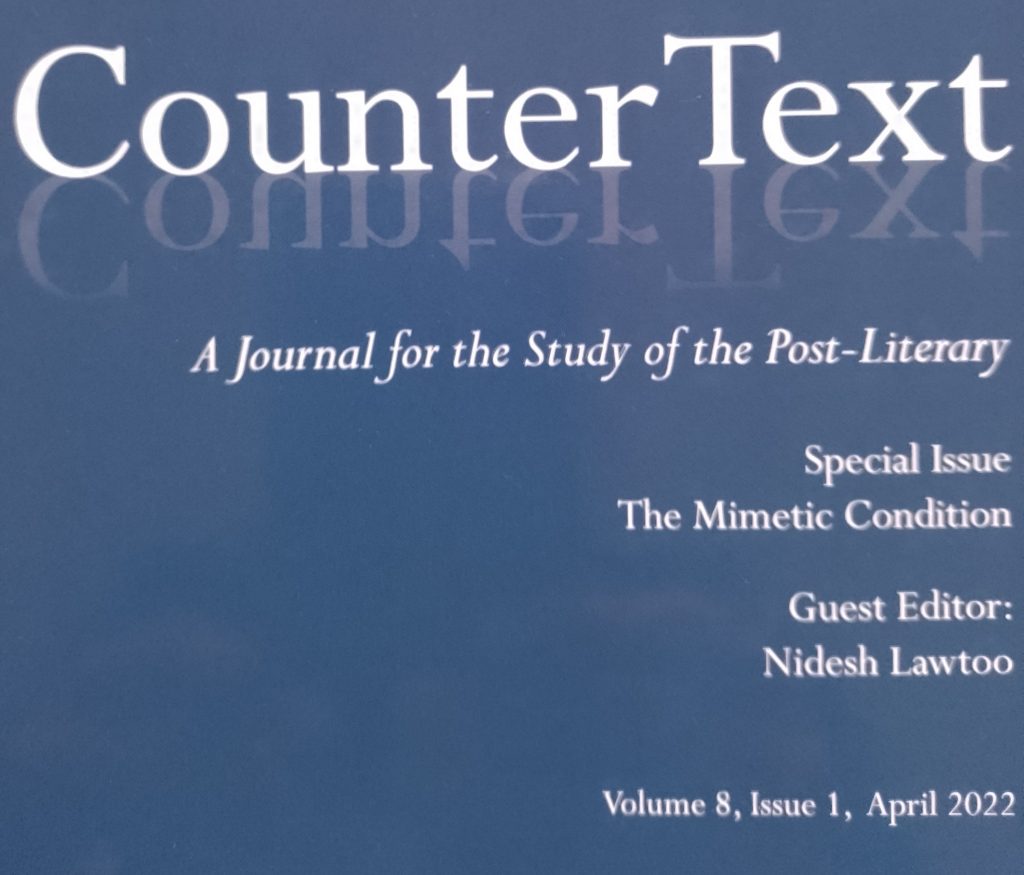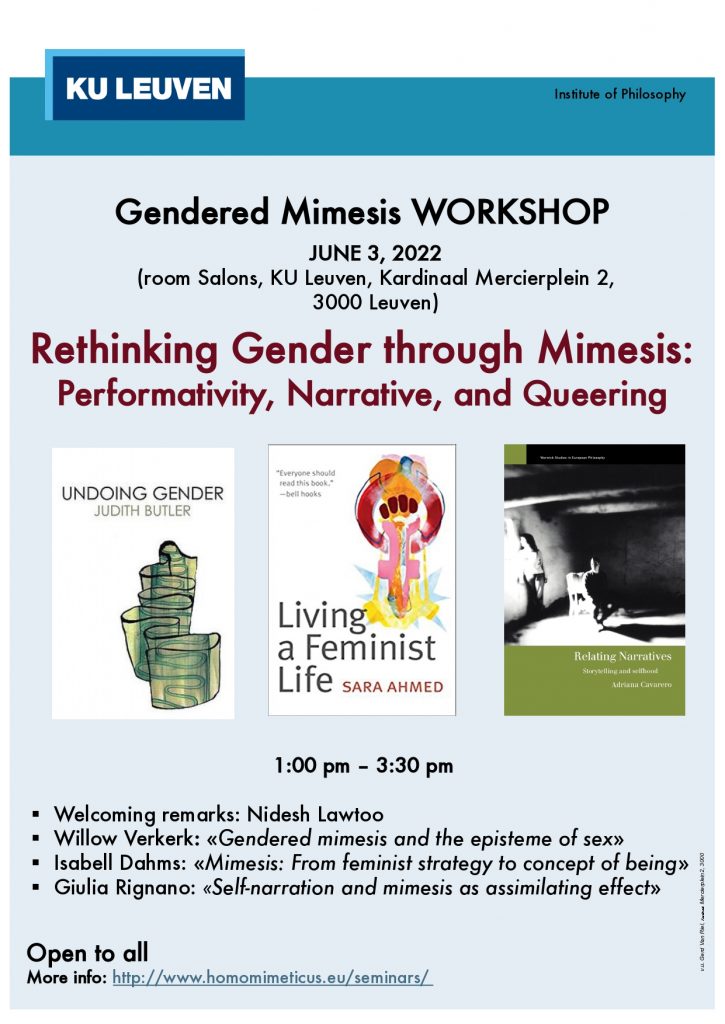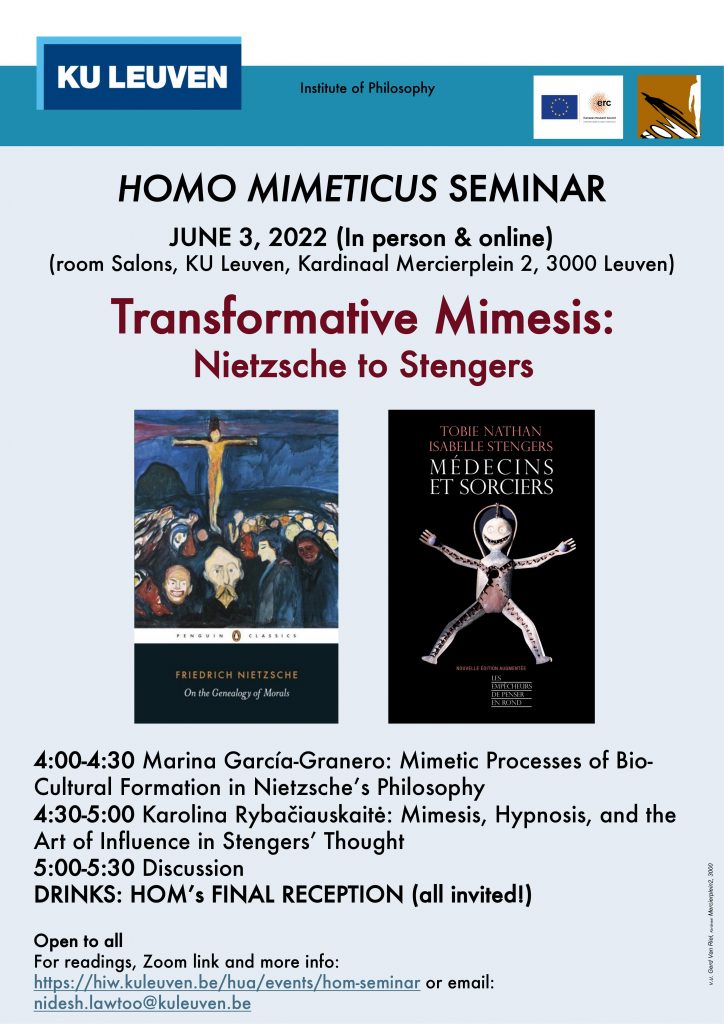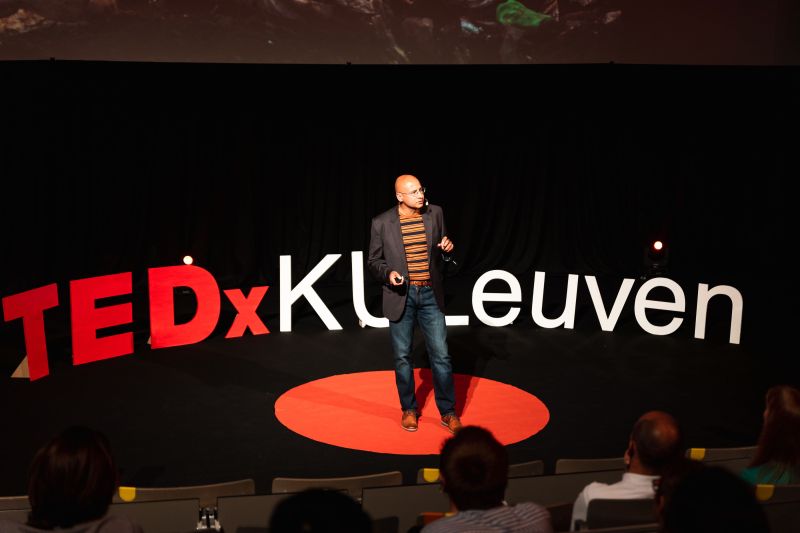When navigating the parallel world of fictional narrative, we basically rely on the same brain-body resources shaped by our relation to mundane reality, since both realms are characterized by similar social practices and performative acts. Cognitive narratology reveals that readers make sense of complex narratives by relying on very few textual or discourse cues.
KEYNOTE 1. Plato on Facebook (Mikkel Borch-Jacobsen)
In Keynote 1 for the Mimetic Turn, Mikkel Borch-Jacobsen reloads Plato’s critique of mimesis for the digital age by restaging the following dialogue:
Socrates : Of the many excellences which I perceive in the order of our state, there is none which upon reflection pleases me better than the rule about Internet.
Glaucon : To what do you refer ?
Socrates : To our refusal to admit the memetic kind of media, for it certainly ought not to be received … Speaking in confidence, for you will not denounce me to Facebook and the rest of the memetic networks, all memes are made to contaminate the thinking (dianoia) of the hearers, unless as an antidote (pharmakon) they possess the knowledge of the true nature of the originals.
Introducing the Mimetic Turn (Nidesh Lawtoo)
If, for a long time, mimesis has been restricted to the logic of visual representation, aesthetic realism, and the metaphysics of sameness it presupposes, the ERC-funded project Homo Mimeticus overturns this perspective to foreground a re-turn to an immanent, affective, embodied, and relational conception of mimesis at play in different processes of becoming other. This introduction to The Mimetic Turn Conference (April 2022) presents some of the concepts driving this new theory of homo mimeticus.
SPECIAL ISSUE: The Mimetic Condition

Based on a HOM conference held at KU Leuven, this special issue of CounterText on The Mimetic Condition (ed. Nidesh Lawtoo) joins forces with Jean-Luc Nancy, Gunter Gebauer, Christoph Wulf, and many others in order to promote a mimetic turn, or re-turn of attention to mimesis across different areas of critical theory. In the process, it proposes steps to a new theory of homo mimeticus to face some of the main–pandemic, political, environmental…– crises that cast a shadow on the present and future. Sample chapters available HERE& an Introductory VIDEO HERE.
GM Workshop: Rethinking Gender through Mimesis: Performativity, Narrative, Queering (June 3)

Readings & more details are available here:
HOM Seminar: Transformative Mimesis: Nietzsche to Stengers (June 3)

Readings & more details HERE.
Homo Mimeticus: Nidesh Lawtoo @ TEDx

To conclude the Homo Mimeticus Project, PI Nidesh Lawtoo takes the mimetic turn on the TEDx stage, where mimesis has been at play for quite some time. Addressing the timely question, “how to (re)structure the (de)structured,” Nidesh takes us on an untimely philosophical journey–from children’s mimicry to Socrates’ dialogues, emotions to emojis, the Greek stage to the TED stage–to show that imitation is constitutive of an original species he calls, homo mimeticus.
Jean-Luc Nancy on The Myth of Community
Jean-Luc Nancy is internationally known for launching the concept of “community” on the philosophical scene. But what is the mythic experience that gave birth to his community in the first place? Where was this scene set? And who are its protagonists? In this singular-plural Prelude shot in the summer of 2020, Nancy begins to narrate the myth of the Strasbourg community to Nidesh Lawtoo, addressing a world that “is soon going to disappear”…
Viral Mimesis: The Patho(-)Logies of the Coronavirus (N. Lawtoo)

In this article, Nidesh Lawtoo argues that the human, all too human vulnerability to mimesis (imitation) is a central and so far underdiagnosed element internal to the Covid-19 pandemic crisis. Supplementing medical accounts of viral contagion, the chapter develops a genealogy of the concept of mimesis – from antiquity to modernity to the present – that is attentive to both its pathological and therapeutic or patho-logical properties. Read full article here.
In Favour of an Ontology of Sexual Difference. Luce Irigaray on Mimesis and Fluidity (Niki Hadikoesoemo)

In this article, Niki Hadikoesoemo discusses the notion of the fluidity of sexual identity in light of Luce Irigaray’s account of sexual difference. Taking mimesis in its reproductive and productive sides as a guiding thread, she examines the historicity of sexual identity fluidity in relation to femininity in Irigaray’s second-wave feminism to show that sexual fluidity has to be configured by the concept of sexual difference if it wants to be productive, creative, and transformative. Full article here.
